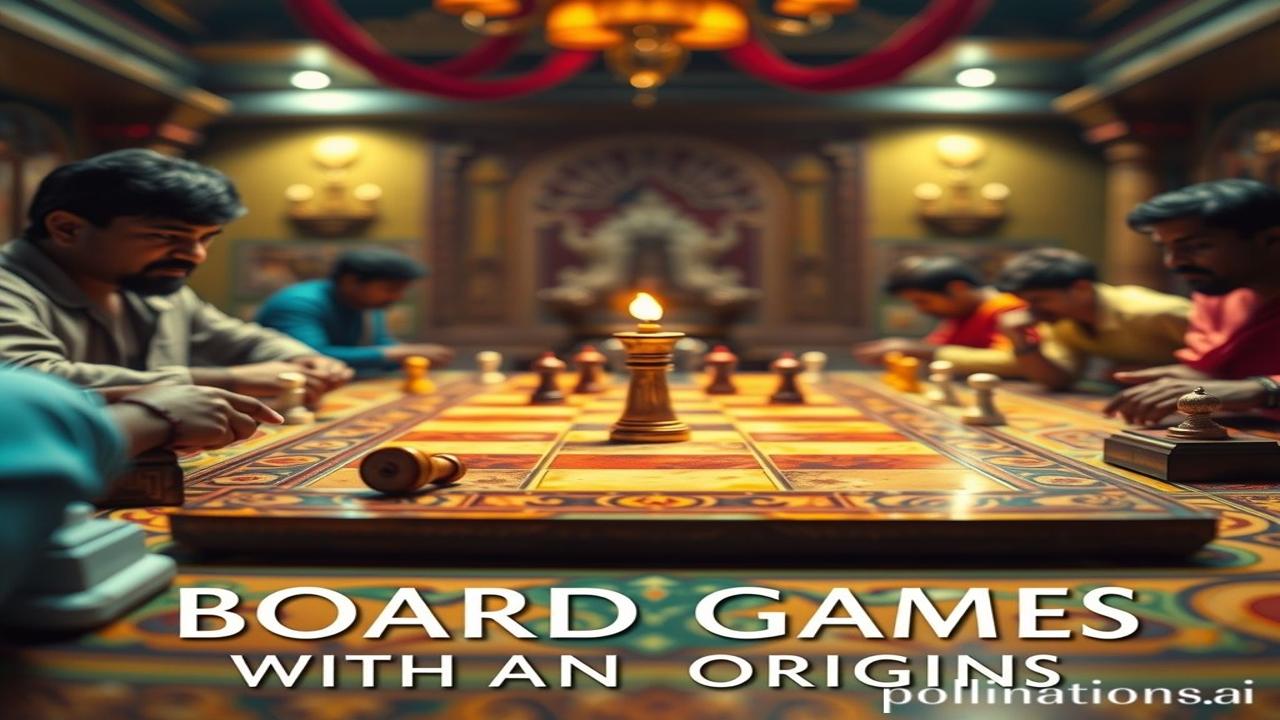Board Games with Indian Origins: Khel Khel Mein, Itihas!
Kabhi socha hai, jab hum Ludo ya Snakes and Ladders khelte hain, toh hum kitni purani sanskriti se jude hue hain? Imagine, hazaaron saal pehle, kisi raja ke darbar mein, ya kisi gaon ke aangan mein, log exactly yehi games khel rahe the. Waqt ki dhool mein, inn games ki kahaniyan thodi dhundhli ho gayi hain, but aaj hum inhe phir se taza karenge! Let’s dive into the fascinating world of board games with Indian origins!
Itihas Ki Galiyon Mein: Origins & Importance
What exactly are we talking about? We’re talking about games like Moksha Patam (Snakes and Ladders), Pachisi (Ludo), and Chaturanga (Chess) – games that weren’t just about fun, but also about teaching life lessons, strategy, and even spirituality.
These games originated centuries ago in different parts of India. Chaturanga, for example, is considered the ancestor of chess and is believed to have emerged in the Gupta Empire around the 6th century CE. Pachisi, a cross and circle board game, has been found in the caves of Ellora, dating back to the same period. And Moksha Patam? Well, that one’s got a story even deeper, with roots in moral and philosophical teachings!
Why are these games so important? They are not just old games; they are a dharohar (heritage). They tell us about our ancestors’ values, their intelligence, and their ways of life. In a time before television and smartphones, these games were a vital part of social life, bringing communities together and passing down traditions.
Zameeni Sach: Life, Kings, and Commoners
Imagine Raja Harshavardhana, sitting in his court, deeply engrossed in a game of Chaturanga. His queen, Rajyashri, watches him, offering strategic suggestions. The air is thick with the scent of sandalwood incense and the sounds of court musicians playing sitar.
Now, shift the scene to a humble village in Rajasthan. A group of farmers, after a long day in the fields, gather under a banyan tree. They spread a cloth on the ground and begin a game of Pachisi. Laughing, teasing, and strategizing, they forget their daily struggles for a while, lost in the moment.
Dialogue:
“Arre Ramu, teri chaal mein dum nahi hai! Yeh paasa toh dekh kar phenk!” exclaims one farmer.
“Chal bhai, dekhna abhi, meri goti seedha Raja banegi!” retorts another, rolling the dice.
These games were for everyone, from emperors to commoners. They were a common thread that connected people across different social strata.
Dharohar Aur Pehchan: Cultural Significance Today
Do these ancient games still matter in today’s India? Absolutely!
- Rituals: Even today, in some Hindu wedding rituals, board games are played to symbolize the joining of families and the playful competitiveness that strengthens relationships.
- Art & Architecture: The motifs of these games, like snakes and ladders, are often seen in traditional art and architecture.
- Festivals: During Diwali, many families still play Ludo or other board games as a way to bond and celebrate together.
- Bharatiyata & Modern Identity: These games are a reminder of our rich and complex past. They teach us the importance of strategy, patience, and resilience – qualities that are just as relevant today as they were centuries ago. They remind us of our Bharatiyata (Indianness).
Mazedar Tathya Ya Bhram-Bhanjak: Fun Facts & Myths
Fun Fact: Did you know that Snakes and Ladders, or Moksha Patam, was originally designed as a moral lesson? The ladders represented virtues, while the snakes represented vices. The goal was to attain Moksha (liberation) by climbing the ladders and avoiding the snakes!
Myth Buster: Log samajhte hain ki chess sirf royalty ka game tha. Lekin asli sach yeh hai ki Chaturanga, chess ka ancestor, har varg ke logo mein popular tha, from kings to soldiers. It was a test of strategic thinking and mental prowess that everyone could participate in.
Drishya Aur Bhavnayein: Visual & Sensory Layer
The air smells of agarbatti and spices. The temple walls feel cool and smooth to the touch. The sounds of children laughing and dice rattling echo through the streets. The vibrant colors of the board games – red, yellow, green, blue – contrast with the earthy tones of the surroundings. These sensory experiences bring the world of ancient India to life!
Antim Vichar Ya Uddharan: Closing Insight or Quote
These ancient board games are more than just entertainment. They are a window into our past, a reflection of our values, and a reminder of the enduring power of human connection.
“Khel khel mein seekh milti hai, seekh mein zindagi ka saar.” (Through games, we learn, and in learning lies the essence of life.)
